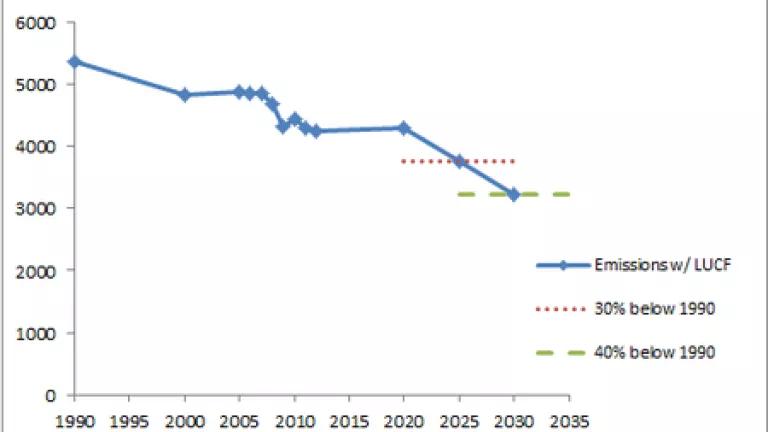Europe takes first step towards Paris agreement: Commits to next round of emissions cuts

The European Union has agreed to an additional package of measures to address climate change as they become the first country to announce their post-2020 climate targets in advance of the Paris agreement next December. Europe agreed to cut their emissions domestically by more than forty percent by 2030. This is the first step as all key countries are supposed to outline their next round of climate commitments by the first part of next year in order to ensure that the next climate agreement puts the world on a solid path to avoid the worst impacts of climate change.
Europe committed to:
This commitment comes from a decision of the European Council – the body that represents the Heads of Government of all twenty-eight Member States. The commitment will be enshrined in domestic legislation through a process that involves the European Parliament, with key decision-making of the European Council and the European Commission. There is no expectation that this target won’t be enshrined in domestic law as once the Heads of Government for the European Union countries agree then the other bodies agree to at least that level of commitment (sometimes the other bodies strengthen the effort).
With this decision Europe has extended their climate target beyond 2020 by committing to go from their current target of twenty percent below 1990 levels in 2020 to forty percent by 2030. This target would put them in line with a 2025 target of 30 percent below 1990 levels. It is important that Europe commit to a 2025 climate target in the context of the Paris agreement in order to avoid locking in weak targets for a decade and a half and to encourage countries to focus on the urgent need for near-term action.
At the same time, Europe has opened the door to increase its targets in two ways:
- The Council committed to a target of “at least” forty percent implying that the target could be strengthened in the context of greater ambition from other countries. Leading European environmental, development, and other groups have called for even tougher targets. A similar push was made by major European countries including the United Kingdom, France, Germany, and the Netherlands.
- The Council decision states that the target is a “domestic” target. This means that with international assistance/investments they might be able and willing to go even further. For example, Europe has previously signaled an interest in a revised international offset system and a willingness to deepen their target if such a system were agreed and implemented.
Europe also agreed to a “binding” renewable energy target of at least 27% by 2030 – meaning that 27% of their energy will come from renewable sources by that date, a goal of cutting their energy-use by 27%, and some reforms to their cap-and-trade program.
This is a good opening effort from one of the largest economies in the world and the third largest emitter. Hopefully other countries will step up the plate next year with bold and ambitious climate targets, and strong domestic measures to ensure that they follow through.
---------------------
Data in Graph: from European Environmental Agency emissions with land-use change and forestry (LUCF); NRDC calculated 2025 targets using a straight line and 2030 on the basis of the 40% cut with LUCF.

